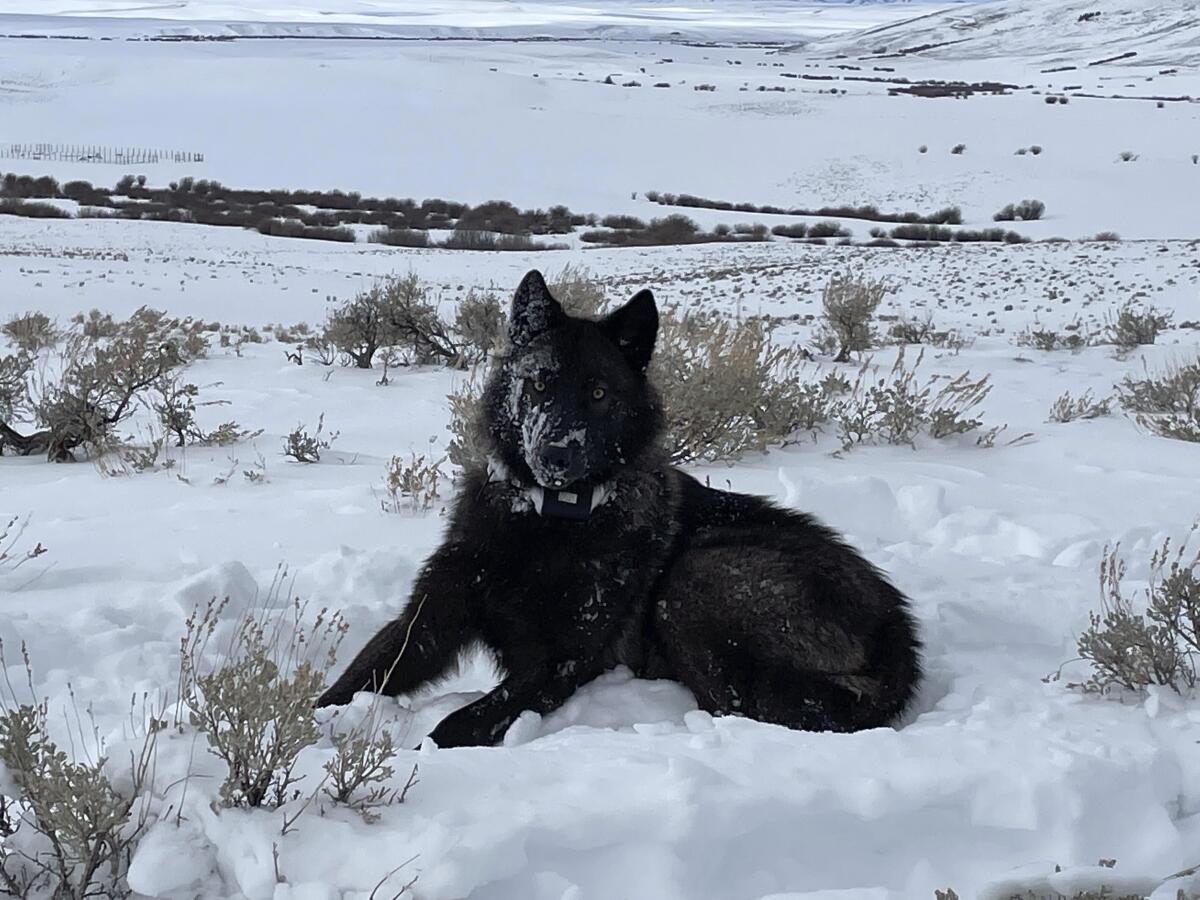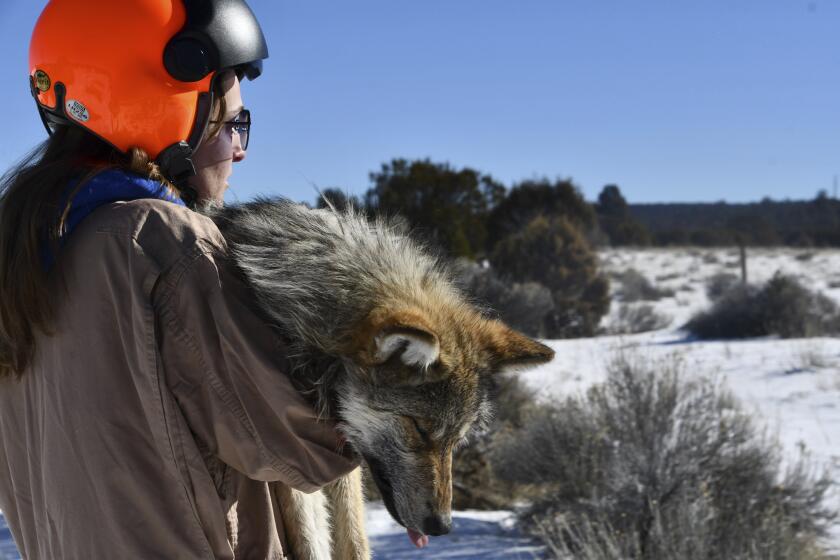Colorado cattle industry sues over wolf reintroduction on cusp of the animals’ release

- Share via
DENVER — Just weeks before the deadline for Colorado to begin reintroducing gray wolves under a voter-approved initiative, representatives of the cattle industry are suing state and federal agencies in the hopes of delaying the predators’ release.
The Gunnison County Stockgrowers’ Assn. and Colorado Cattlemen’s Assn. say in the lawsuit filed Monday that U.S. Fish and Wildlife Services failed to adequately review the effects of the plan to reintroduce up to 50 wolves over the next several years.
The predators’ release in Colorado, voted for in a 2020 ballot measure, has already stirred controversy and sharpened divides between rural and urban residents. City dwellers largely voted for the measures that would most affect rural areas, where wolves can prey on livestock that help drive local economies.
Erin Karney, executive vice president of the Colorado Cattlemen’s Assn., said they will also be requesting a temporary restraining order to put an immediate halt to the impending release of wolves.
The number of endangered Mexican gray wolves roaming the southwestern U.S. has exceeded 200 for the first time since reintroduction efforts began more than two decades ago.
“A lot of our concerns that we brought up through the wolf management plan hearings were not adequately addressed,” Karney said. “Our members are putting our foot down and saying we can’t rush these processes. We need to take time.”
U.S. Fish and Wildlife Services did perform an environmental review in part on what is called the 10(j) rule, which would permit the killing of wolves in Colorado under certain scenarios even though the animals are considered an endangered species.
Still, the lawsuit alleges that the review doesn’t satisfy federal environmental law and failed to grasp the consequences of wolf reintroduction.
“Impacts of wolf reintroduction... need to be properly reviewed to avoid unintended negative consequences to the natural environment, wildlife, and people of the impacted communities,” said Andy Spann, a fifth-generation rancher and president of the Gunnison County Stockgrowers Assn., in a statement.
U.S. Fish and Wildlife Services spokesperson Joe Szuszwalak declined to comment, citing ongoing litigation. The Associated Press reached out to Colorado Parks and Wildlife for comment.
An analysis of state and federal data by the Associated Press found that, in 2022, gray wolves attacked domesticated animals hundreds of times across 10 states in the contiguous U.S., including Colorado.
Wildlife: Sheep Mountain pack is a success story--proof the animals can gain a foothold outside park’s safe reaches. But it also warns of what’s ahead for the inhabited West.
Data showed that attacks killed or injured at least 425 cattle and calves, 313 sheep and lambs, 40 dogs, 10 chickens, five horses and four goats.
While those losses can be devastating to individual ranchers or pet owners, the industry-wide impact is minimal. The number of cattle killed or injured in the documented cases equals 0.002% of herds in the affected states, according to a comparison of depredation data with state livestock inventories.
Once a case of livestock killed is confirmed to be from wolves, ranchers can be reimbursed by the state for their loss. But ranchers say merely financial compensation doesn’t assuage the problem of empty-handed customers and the work of wolf deterrents.
Gray wolves were exterminated across most of the U.S. by the 1930s under government-sponsored poisoning and trapping campaigns. They received endangered-species protections in 1975, when there were about 1,000 left, in northern Minnesota.
Since then, there has been no turning back for other states where gray wolves have become reestablished.
An estimated 7,500 wolves in about 1,400 packs now roam parts of the contiguous U.S.
More to Read
Sign up for Essential California
The most important California stories and recommendations in your inbox every morning.
You may occasionally receive promotional content from the Los Angeles Times.











